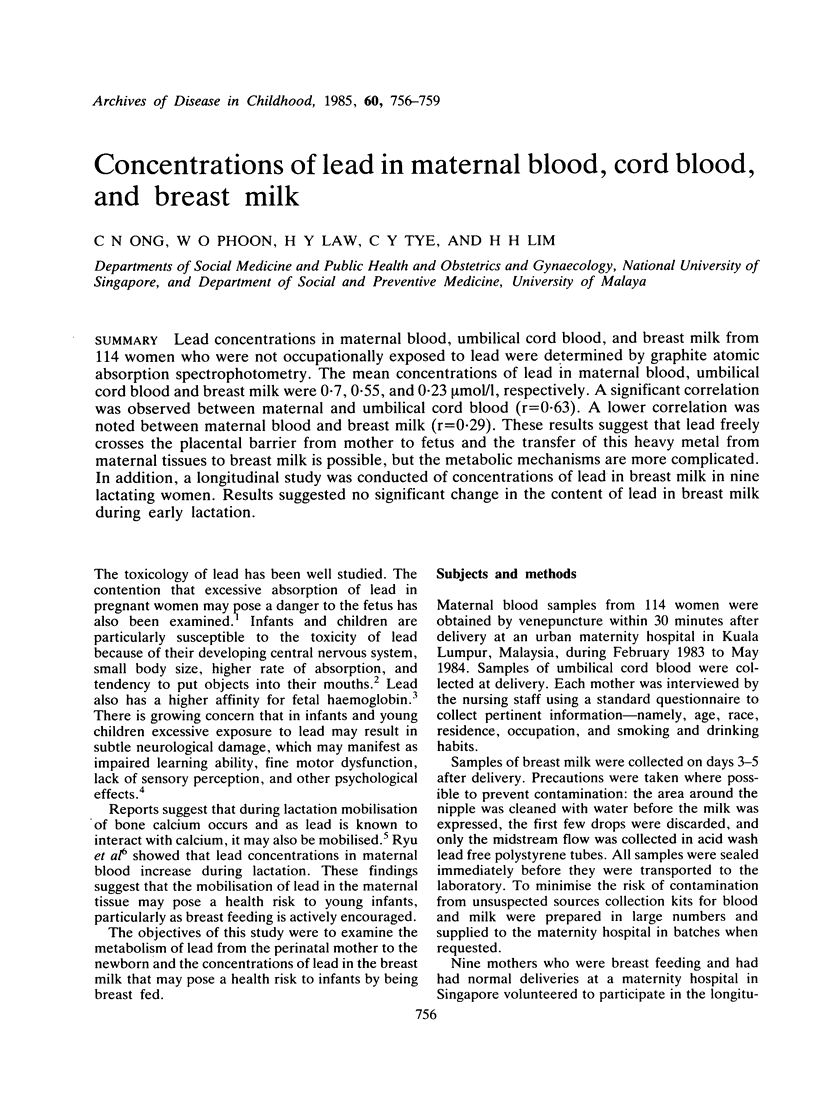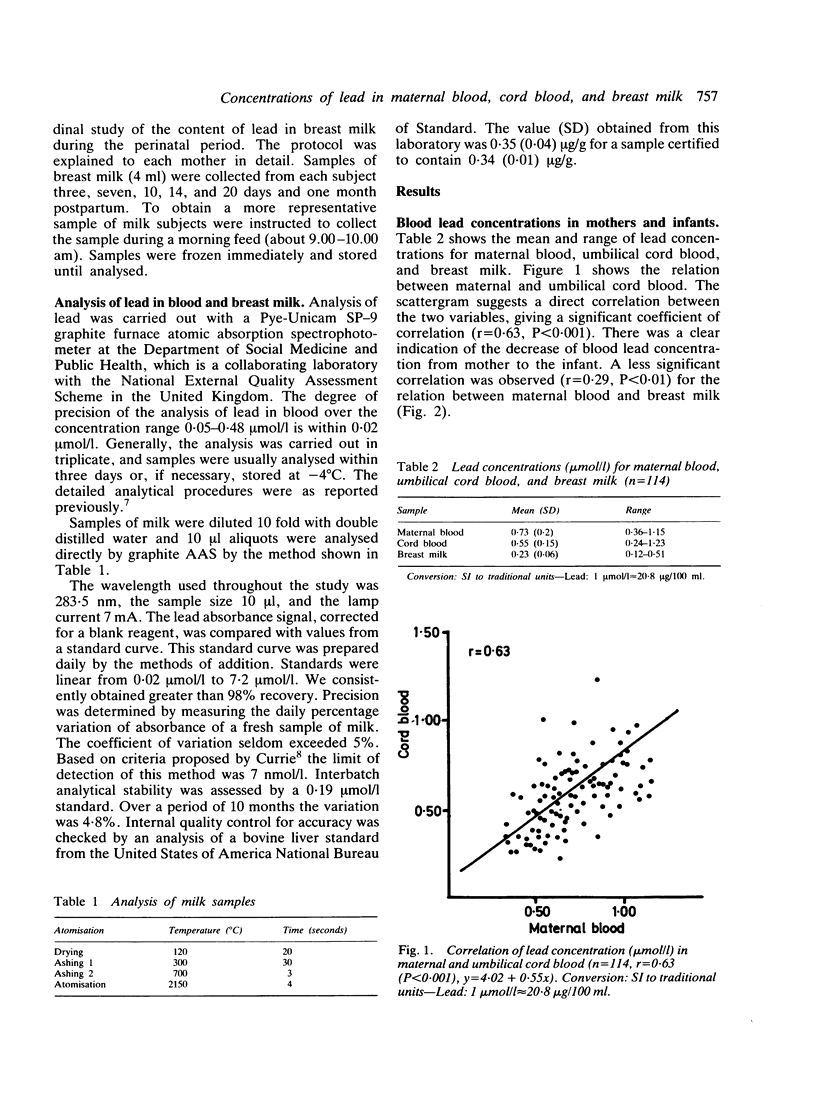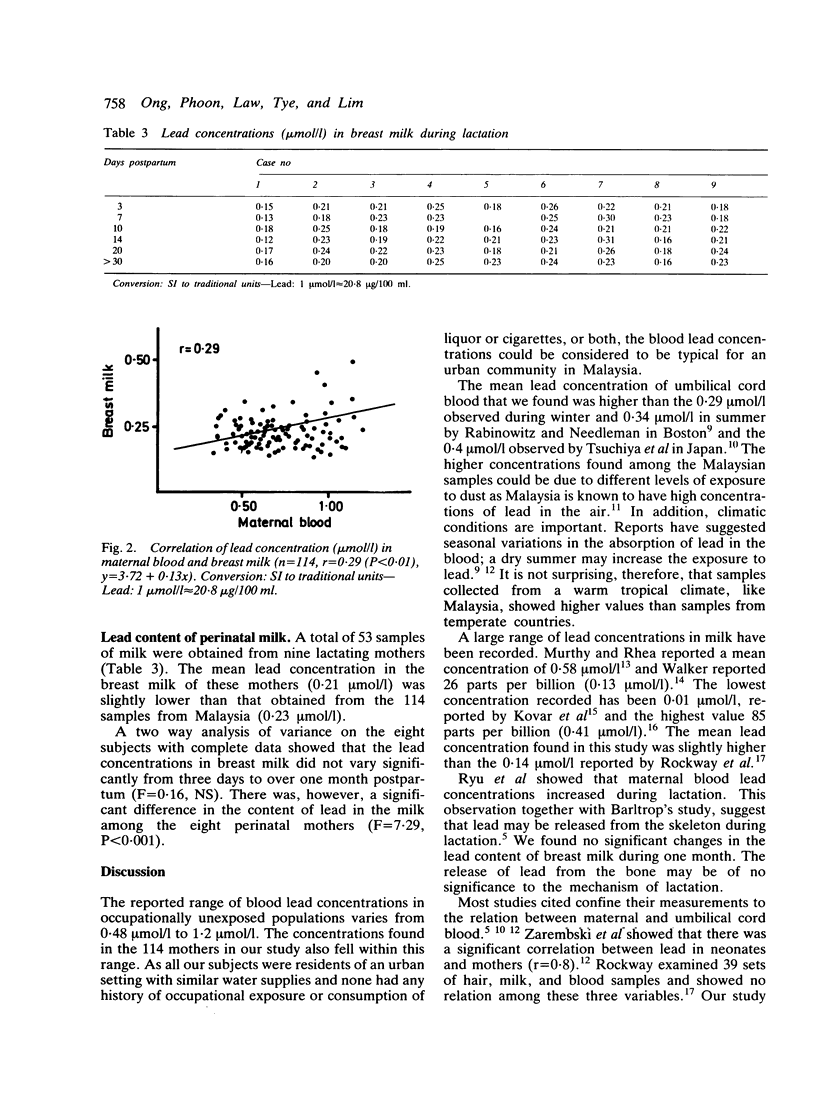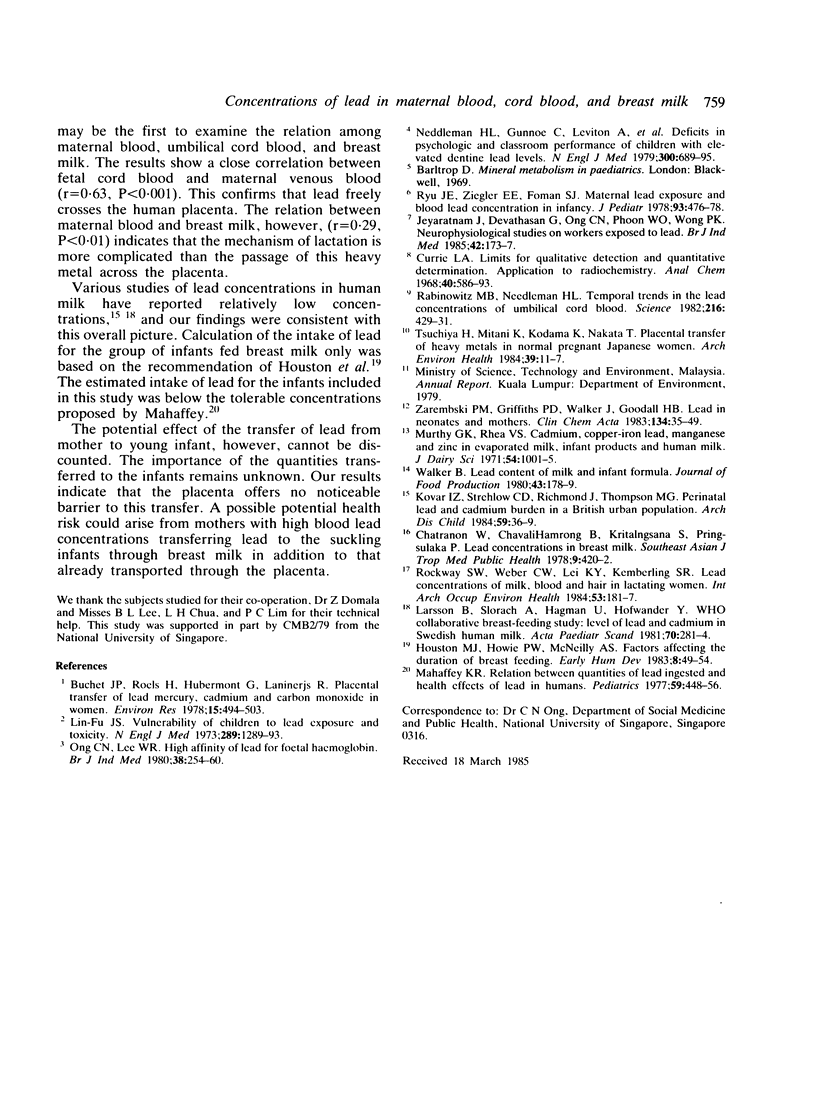Abstract
Lead concentrations in maternal blood, umbilical cord blood, and breast milk from 114 women who were not occupationally exposed to lead were determined by graphite atomic absorption spectrophotometry. The mean concentrations of lead in maternal blood, umbilical cord blood and breast milk were 0.7, 0.55, and 0.23 mumol/l, respectively. A significant correlation was observed between maternal and umbilical cord blood (r = 0.63). A lower correlation was noted between maternal blood and breast milk (r = 0.29). These results suggest that lead freely crosses the placental barrier from mother to fetus and the transfer of this heavy metal from maternal tissues to breast milk is possible, but the metabolic mechanisms are more complicated. In addition, a longitudinal study was conducted of concentrations of lead in breast milk in nine lactating women. Results suggested no significant change in the content of lead in breast milk during early lactation.
Full text
PDF



Selected References
These references are in PubMed. This may not be the complete list of references from this article.
- Buchet J. P., Roels H., Hubermont G., Lauwerys R. Placental transfer of lead, mercury, cadmium, and carbon monoxide in women. II. influence of some epidemiological factors on the frequency distributions of the biological indices in maternal and umbilical cord blood. Environ Res. 1978 Jun;15(3):494–503. doi: 10.1016/0013-9351(78)90128-7. [DOI] [PubMed] [Google Scholar]
- Chatranon W., Chavalittamrong B., Kritalugsana S., Pringsulaka P. Lead concentrations in breast milk at various stages of lactation. Southeast Asian J Trop Med Public Health. 1978 Sep;9(3):420–422. [PubMed] [Google Scholar]
- Houston M. J., Howie P. W., McNeilly A. S. Factors affecting the duration of breast feeding: 1. Measurement of breast milk intake in the first week of life. Early Hum Dev. 1983 Mar;8(1):49–54. doi: 10.1016/0378-3782(83)90033-6. [DOI] [PubMed] [Google Scholar]
- Jeyaratnam J., Devathasan G., Ong C. N., Phoon W. O., Wong P. K. Neurophysiological studies on workers exposed to lead. Br J Ind Med. 1985 Mar;42(3):173–177. doi: 10.1136/oem.42.3.173. [DOI] [PMC free article] [PubMed] [Google Scholar]
- Kovar I. Z., Strehlow C. D., Richmond J., Thompson M. G. Perinatal lead and cadmium burden in a British urban population. Arch Dis Child. 1984 Jan;59(1):36–39. doi: 10.1136/adc.59.1.36. [DOI] [PMC free article] [PubMed] [Google Scholar]
- Larsson B., Slorach S. A., Hagman U., Hofvander Y. WHO collaborative breast feeding study. II. Levels of lead and cadmium in Swedish human milk, 1978-1979. Acta Paediatr Scand. 1981;70(3):281–284. doi: 10.1111/j.1651-2227.1981.tb16552.x. [DOI] [PubMed] [Google Scholar]
- Lin-Fu J. S. Vulnerability of children to lead exposure and toxicity (second of two parts). N Engl J Med. 1973 Dec 13;289(24):1289–1293. doi: 10.1056/NEJM197312132892407. [DOI] [PubMed] [Google Scholar]
- Mahaffey K. R. Relation between quantities of lead ingested and health effects of lead in humans. Pediatrics. 1977 Mar;59(3):448–455. [PubMed] [Google Scholar]
- Murthy G. K., Rhea U. S. Cadmium, copper, iron, lead, manganese, and zinc in evaporated milk, infant products, and human milk. J Dairy Sci. 1971 Jul;54(7):1001–1005. doi: 10.3168/jds.S0022-0302(71)85962-3. [DOI] [PubMed] [Google Scholar]
- Needleman H. L., Gunnoe C., Leviton A., Reed R., Peresie H., Maher C., Barrett P. Deficits in psychologic and classroom performance of children with elevated dentine lead levels. N Engl J Med. 1979 Mar 29;300(13):689–695. doi: 10.1056/NEJM197903293001301. [DOI] [PubMed] [Google Scholar]
- Preble O. T., Black R. J., Friedman R. M., Klippel J. H., Vilcek J. Systemic lupus erythematosus: presence in human serum of an unusual acid-labile leukocyte interferon. Science. 1982 Apr 23;216(4544):429–431. doi: 10.1126/science.6176024. [DOI] [PubMed] [Google Scholar]
- Rockway S. W., Weber C. W., Lei K. Y., Kemberling S. R. Lead concentrations of milk, blood, and hair in lactating women. Int Arch Occup Environ Health. 1984;53(3):181–187. doi: 10.1007/BF00398812. [DOI] [PubMed] [Google Scholar]
- Ryu J. E., Ziegler E. E., Fomon S. J. Maternal lead exposure and blood lead concentration in infancy. J Pediatr. 1978 Sep;93(3):476–478. doi: 10.1016/s0022-3476(78)81169-x. [DOI] [PubMed] [Google Scholar]
- Zarembski P. M., Griffiths P. D., Walker J., Goodall H. B. Lead in neonates and mothers. Clin Chim Acta. 1983 Oct 31;134(1-2):35–49. doi: 10.1016/0009-8981(83)90182-1. [DOI] [PubMed] [Google Scholar]


